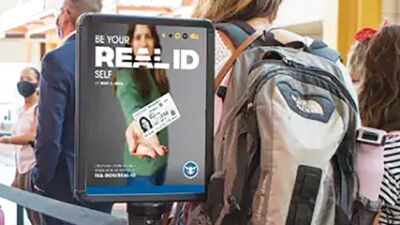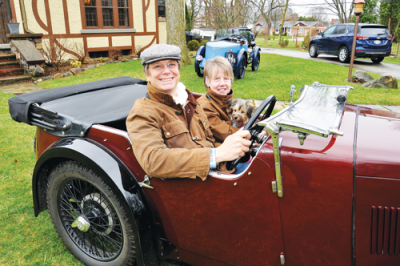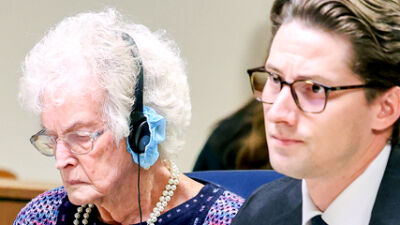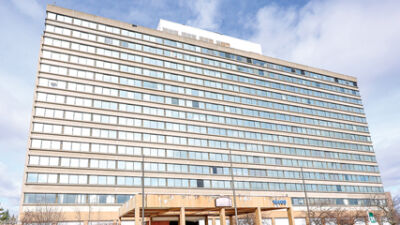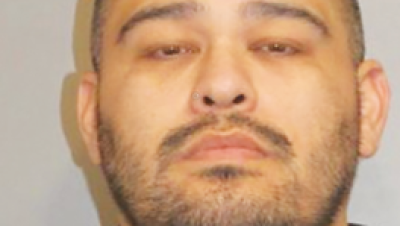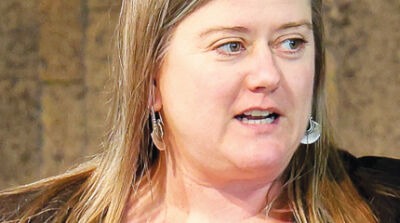OAKLAND COUNTY — Last November, local residents approved the Oakland County Public Transportation Millage, which authorized the county to levy a millage for the purpose of funding transportation services throughout Oakland County.
Before the millage passed, each community in Oakland County could decide if it wanted to opt in or opt out of the public transportation system.
But with voters approving the millage, each community in Oakland County is now required to opt in.
Residents in communities that opted in prior to the millage passing paid 1 mill in taxes for public transportation services. With the millage having passed, those residents will now pay into a 0.95 mill collection, which is 95 cents for every $1,000 of taxable value of a home, for 10 years.
A large chunk of public transportation services are provided by SMART — the Suburban Mobility Authority for Regional Transportation.
However, the Western Oakland Transportation Authority, the North Oakland Transportation Authority and the Older Persons’ Commission are also public transportation service providers.
Dave Woodward, who is the chairman of the Oakland County Board of Commissioners, authored and sponsored the millage proposal.
He shared some updates on changes that have taken place since the millage passed.
“Since it’s passed we created the Oakland County Transit Office to help coordinate outreach (and) planning,” Woodward said. “The first promise of this millage was to ensure that all the four transit agencies that were providing services in Oakland County continue to receive (funding) for the next 10 years. … We ensured funding to maintain all the services that were in place, and we also asked if there was a way to improve service, like extending hours. It’s just a function of paying drivers to drive the vehicles longer.”
Woodward said that, on average, there is about 50% more funding for the transportation service providers to “expand capacity beyond what they were currently doing,” primarily in the form of extended hours and services for NOTA, WOTA and the OPC.
“With SMART, we also laid out a top priority to make certain that we get extended routes as quickly as possible,” he said. “So, maintain what we had in place, but get new routes. … SMART has, over the last few weeks, began going through its required federal process. You have to have public hearings and get feedback before you do any route extensions and changes, and people can go to the SMART website — people can submit feedback via email, letters or take part in some of the publicized community sharings that have been scheduled. So those are the big things, collectively.”
Woodward said that initial contracts are in place for additional funding for expanded service.
“(They are) three-year contracts with annual renewals,” he said. “The expansion of fixed-route processes (is) underway. I’m optimistic by this fall that we will be having fixed route service out to areas that have never had it before.”
Woodward expanded on his thoughts.
“We’re also in the process of identifying where there’s additional gaps of service and who are the best people to do that,” he said. “Is it a further expansion of the providers in place? Is it new partnerships with additional providers? We want a guarantee there’s a base level of service so that people can get to the places they need and want to go.”
Woodward would also like to leverage as many government resources as possible.
“From a state legislative policy perspective, we’re working really hard to make certain that state funding for local bus operating services — this is state funds that provide matching dollars for locally generated revenue like we are – we want to see that revenue increases, because, roughly, it’s like a 30% match of our public millage dollars,” he said. “That allows us to bring additional resources for further expansion of service, deployment of technology, and collectively leveraging these dollars to pull down even further federal funds for new vehicles.”
From Woodward’s perspective, three things required to make transit work are money, drivers for the public transportation vehicles and the actual vehicles.
The chip shortage affecting the automobile industry is having an impact on the availability of public transportation vehicles.
Woodward said that the “lead time” to order specialized Americans with Disabilities Act-equipped vehicles is long.
“You have to put your order in, and it takes six months, nine months, I’ve heard even 18 months from the point you put your order in to actually have a vehicle arrive,” he said.
Woodward said that there are some short-term gaps.
“(There’s) some smaller transit vans that some of the providers use, and so (we) freed up some resources to make those available,” he said. “These smaller transit agencies, they don’t generally run the fixed route. They have more of the curb-to-curb, door-to-door service. It’s supply-chain issues, (the) chip shortage — all of those things have complicated access to vehicles. I think we’ve cracked the nut, in terms of having resources available. Now we’ve just got to work out the logistics to be able to get the vehicles to increase capacity.”
Although the passage of the millage has helped with funding, Eli Cooper, Oakland County’s first transit manager, acknowledged that the challenge is getting vehicles and vehicle operators, in order to expand services.
Cooper spoke at a “Transit Tuesday Talk” event at the Baldwin Center in Pontiac last month.
“You can’t get on a bus if the buses aren’t coming out of the factory, and so, these are the kind of things we’re going to be working (on) as hard as we can to prepare the plans,” Cooper said. “We’re using the county’s millage resources to encourage the expansion. It’s been a long, long time since we’ve seen expansion; we’re seeing it now because the county helped get the message out. We just need to see success breed success.”
Bernard Parker, who is SMART’s vice president of external affairs, also spoke at the “Transit Tuesday Talk” event.
“One of the things I learned about transit, unfortunately, is sometimes things don’t turn bad overnight; they won’t turn good overnight, either. It’s a process,” Parker said. “You have to be patient with us, but you have to hold us accountable. “(Residents) voted overwhelmingly to expand, to have non opt-outs in Oakland County, so we either have to produce or get out of the way.”
Parker specifically addressed the shortage of public transportation system drivers.
“Post-COVID, (people) don’t want to go to work,” he said. “One of the things we’re trying to do at SMART is not only do more hiring, (but) more recruiting. … We really are trying.”
Woodward addressed what is required to “meet the demand that we know is out there.”
“We need even more vehicles,” he said. “Now those additional vehicles also need drivers. All those variables are working at the same time, and that’s why you need a transit manager and leadership at all these transit agencies working together. I’m optimistic about what we’re going to be able to accomplish in a year out. I think it’s important to keep in mind the dollars for this millage didn’t become available until February of this year.”
Woodward said that there won’t be fixed routes on every corridor in Oakland County, as it doesn’t make sense in areas that don’t have the density to support it. From his perspective, in some rural areas, curb-to-curb and door-to-door service is a more logical solution.
He was asked if there will be fixed routes in communities such as Orchard Lake, Sylvan Lake and Keego Harbor, all of which previously opted out of having public transportation services.
“Certainly, yeah,” Woodward said. “Telegraph runs through Keego and Sylvan and will be able to participate, not just from the fixed route, but also the paratransit. So if you have mobility issues and are within a certain distance of a fixed route, that, then, will come and pick you up on a scheduled time that the rider needs. Some additional routes are being talked about in that area.”
According to Woodward, SMART is in the process of undertaking a full inventory of bus stops.
“We set money aside in every year’s millage to be used for infrastructure, working with local communities,” he said. “In some cases, that might be doing some sidewalk improvements. … You’re not going to have a covered bus stop at every (location). That doesn’t make sense, but that is part of the expansion. But I think it’s also important to look back (at) where we already had service and improve the rider experience there as well.”
Woodward said that he expects to see more bus stops by the fall, with SMART responsible for building them.
He indicated that it is still too early to know the statistics for public transportation ridership since the millage passed.
“Give me six more months, because we’re going to be able to go to more places, because providers of these services are extending their hours — more rides are going to be made available, because the capacity’s there to deliver more rides,” Woodward said.
Woodward shared another of his aspirations for public transit in Oakland County.
“The agencies are aligning their price structure to be the same, because we want to move, in the end, to a seamless transit experience,” he said. “Hopefully, by the end of this year, we will have a much clearer (understanding) of a singular dispatch platform that all these transit agencies are working on, so that if you or I are going to use a transit service, it’s a seamless experience, regardless of who the actual provider of that service is. I just have to get from point A to point B. I don’t care if it’s a SMART bus that gets me there, if it’s a WOTA bus that gets me there or a NOTA bus — I just need to be able to get there reliably, affordably, safely, and all these agencies working together is the way to do it.”
Woodward provided his version of what success would look like.
“More people being able to get more places they want and need to go, and able to do that over more hours of the day,” he said. “When these smaller providers all collectively agreed to expand service (and) increase days of service, that’s a win for everybody.”
For more information about public transportation services and schedules, visit smartbus.org, ridewota.org, ridenota.org or opcseniorcenter.org.
 Publication select ▼
Publication select ▼



